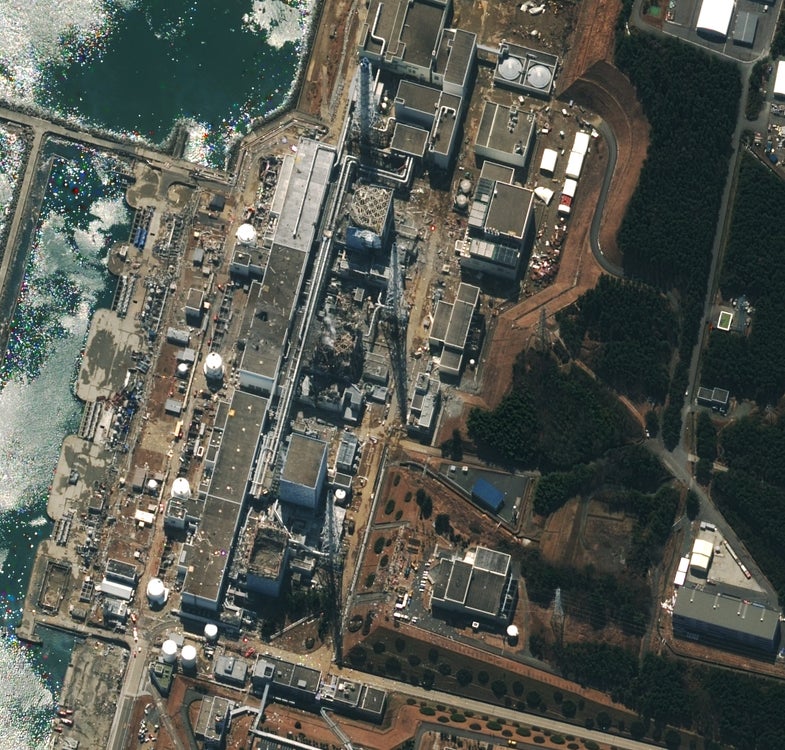As Cooling Efforts Continue, Japanese Officials Consider Burying Fukushima Plant
Japanese officials conceded today they might have to entomb the crippled Fukushima Daiichi nuclear plant in a sarcophagus of sand...

Japanese officials conceded today they might have to entomb the crippled Fukushima Daiichi nuclear plant in a sarcophagus of sand or concrete in order to contain the radiation. It’s a last resort, but acknowledging it’s possible is a sign that matters are still not improving at the stricken plant.
Engineers are still hoping to restore power and restart water pumps to cool the overheating fuel rods, according to Reuters. Workers have been spraying the hardest-hit reactors with water, using boats and helicopters. Four of the power plant’s six reactors have experienced fires, explosions or partial meltdowns.
Even if power can be restored, there’s no guarantee the pumps will work. Much of the plant was heavily damaged in the quake, tsunami and resulting explosions, and the voluminous amount of acid-laced seawater that workers have been pumping in may have corroded equipment further.
“It is not impossible to encase the reactors in concrete. But our priority right now is to try and cool them down first,” an official from the plant operator, Tokyo Electric Power Co, said at a news conference.
This was the procedure at the Chernobyl reactor after it exploded in 1986. The reactor was covered with sand, lead and boric acid dropped from a helicopter, whose pilot was hailed as a hero for his efforts (he died four years later of leukemia, a result of radiation poisoning). The radiation at Fukushima Daiichi is nowhere near that at Chernobyl.
Meanwhile, Japan raised the nuclear crisis’ severity rating to Level 5 on the seven-level INES international scale. That’s on par with the Three Mile Island accident in 1979, Reuters said. Some experts argue Japan’s situation is more serious, however. Chernobyl was a 7 on that scale.
Even if Japanese officials decide to bury the plant, they will still have to cool it off first, according to an adviser to the U.S. Nuclear Regulatory Commission who spoke to CBS News.
One week after a 9.0 magnitude earthquake and tsunami, at least 6,500 people are confirmed dead and 10,300 are missing. Nearly 400,000 people are homeless.
Japanese officials hope to restore power to pumps for reactors 1, 2 and 4 by Saturday, according to Reuters.